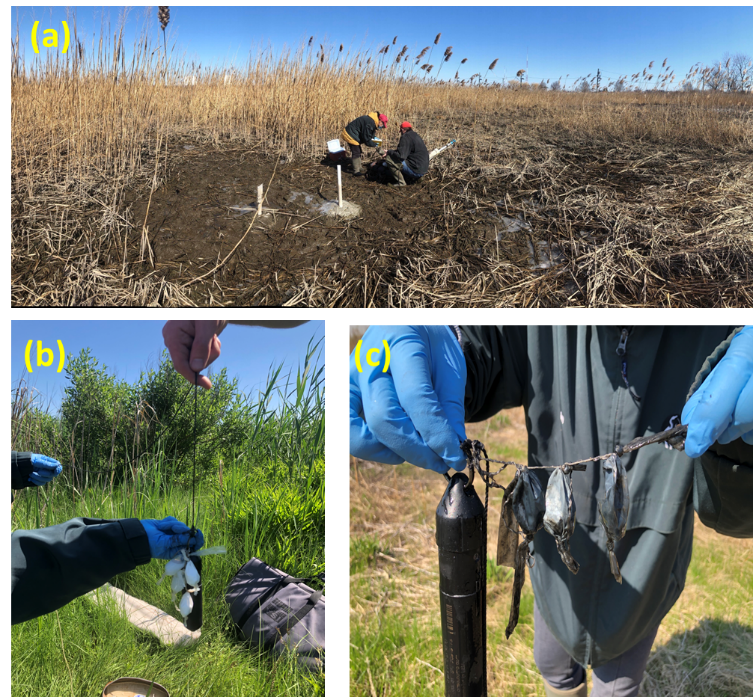Field Studies of the Reverse Weathering of Soil Minerals in Estuarine Wetlands
Our Projects
This project aims to evaluate the extent, rate, and mechanisms of clay neoformation through the reverse weathering of eroded soil minerals in brackish estuarine wetlands, considering variable salinity and redox conditions. This study tests the hypothesis that the neoformation of fine-grained clays via reverse weathering is a significant but largely overlooked geochemical process in tidal marsh soils and sediments. If validated, conceptual and quantitative models of geochemical cycling and the speciation of major elements (Al, Si, Fe) and trace elements and nutrients (e.g., metals, phosphate, K, Ca) will need revision to incorporate the biogeochemical impacts of reverse weathering in these critical ecosystems. Over two years, field studies will examine how key environmental variables (salinity, pH, Eh) influence the dynamics, extent, and geochemical pathways of reverse weathering in brackish wetlands. This systematic approach will quantitatively assess the occurrence of reverse weathering reactions in these environments. Understanding the geochemistry of estuarine soils and sediments is crucial for evaluating the impacts of climate change, as these systems are experiencing hydrological and geochemical changes due to sea level rise and intensifying hydrological cycles, including shifts in salinity, flooding frequency, and riverine sediment deposition.


